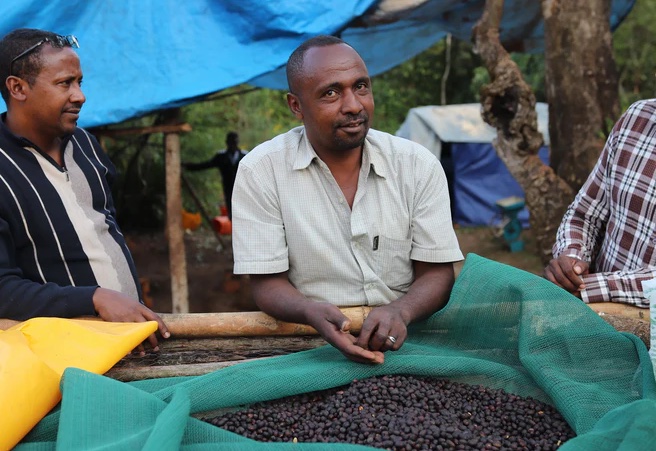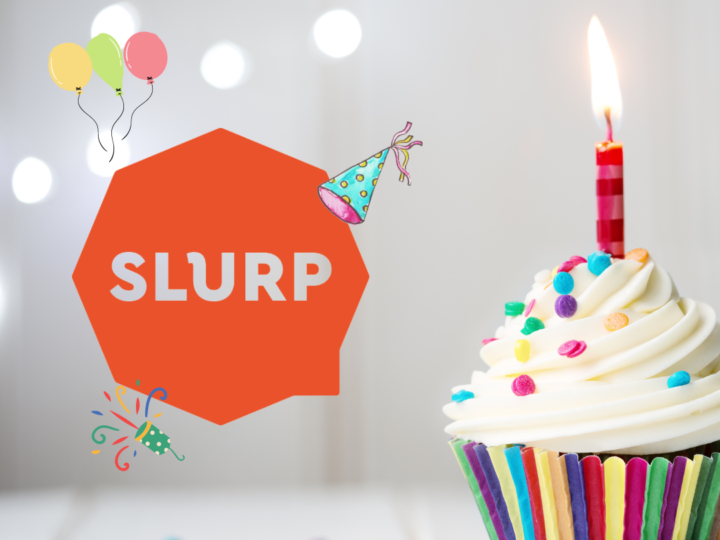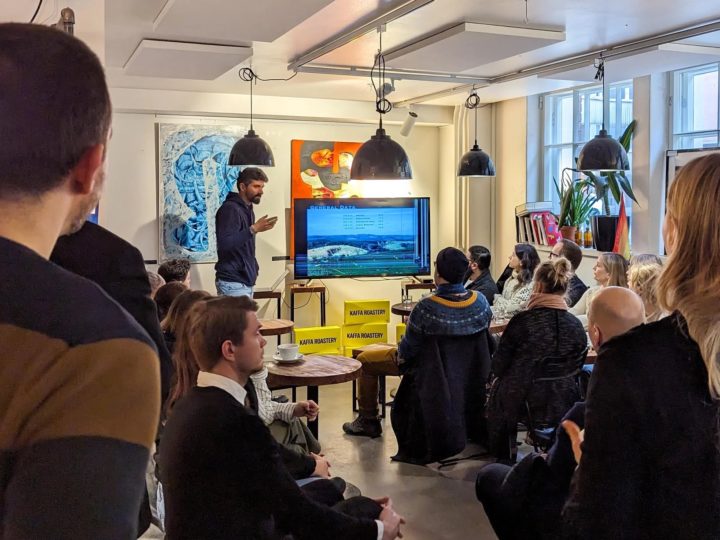The first Roastery Day of the winter was organized at Johan & Nyström. The event was very successful based on the feedback and the participants enjoyed their time hearing about the story of coffee, doing a cup tasting and learning better home brew techniques. Here’s a summary of the event and the asked for coffee recipes with which you can brew delicious coffee easily.
Why are Roastery Days organised?
We receive a lot of questions regarding artisan coffee, brewing and the Finnish coffee culture in general. The coffee culture in Finland is changing rapidly. For these reasons we decided, together with the roasters, to start organising open events, where we could spread this knowledge about coffee and advance the coffee culture.
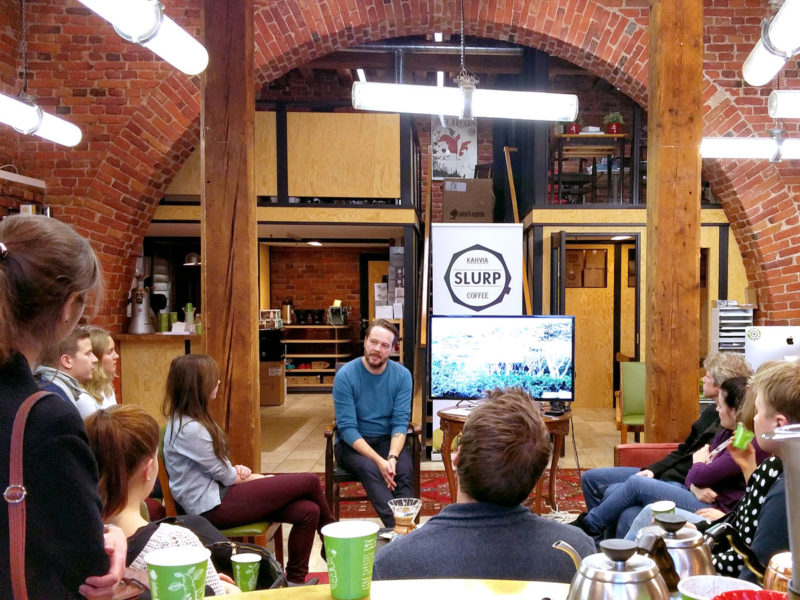
Lari Salomaa from Johan & Nyström telling the story of coffee from the plant to the cup.
1. Coffee: from a plant into a cup
The journey of coffee from the coffee plant into a cup is long, but at its best, very rewardgin. Here are our picks from Lari Salomaa’s talk.
Johan & Nyström acquires their coffees straight from the farmer. This is called Direct Trade. Growing high quality coffee requires motivated farmers — from slave-like conditions no good coffee can come, since the workers don’t care about the product.
The definition of specialty coffee used by artisan roasters is that the coffee has received more than 80 points in a cupping. The difference is in the taste, which lacks the bitterness typical to lower quality coffees. (NB: the bitterness is not the same as the natural acidity found in coffees; a good comparison for this could be wine.)
Growing coffee can be mainly done around the equator due to the amount of precipitation and fertile soil.
The process is as follows: first the seeds (beans) are planted and grown within a year to be about 30 cm tall. The seedlings are then planted at their final growing spots on the farm, which oftern are in mountaineous areas.
The coffee berries come from the white flowers (Arabica variety). The blossoming can last only 48 h — if during this time the temperature goes below zero or the rain falls too hard, the whole crop may be ruined. The same coffee plant is visited often, because to ensure high quality, only ripe berries are picked. On industrial farms the ripeness of the berries is not observed, since the harvesting machines don’t differentiate between a ripe and unripe berry.
The coffee is processed in various ways. The most common methods are the following:
- Washing: the most efficient method, but critised for using up potable water, which might not be abundant otherwise. For washing the amount of berries needed for a 60 kg bag of coffee, 1000 l of water is needed. Luckily the improving recycling techniques make it possible to use the same water many times, which lessens the negative impact. Washed coffees have a typical aroma of lightness, acidity and floral.
- Natural processing: the coffee berry is dried whole after picking on patios. The difference alike to that of sundried and normal tomatoes — though with coffee, the pulp is separated in any case. This method requires a lot of hands, because the berries have to be turned around a lot to avoid mould. With Natural processing, the coffee becomes sweeter and slightly more intensive.
- Pupled Natural / Honey. This method uses a pulpper, which separates the pulp from the bean. A sweet layer remains on the surface, which gets soaked up by the bean. Due to this, coffees processed with this method have a typical, honey-like taste.
Roasting. This is the most important phase during the journey of coffee when it comes to taste. If the coffee is roasted too dark or light, one can ruin the coffee altogether. The challenge of the roaster is to find the unique strengths of each coffee and to roast it so the good sides are pronounced. During the whole journey of the coffee, this is the phase where the vision and expertise of the roaster come forth: the same coffee can taste totally different in the hands of different roasters.
Johan & Nyström calls the roasting method they employ “slow roast”. In it, the coffee is roasted more slowly as usual. And unlike industrial roasters, who flash roast the beans, the point is to roast the whole volume of the bean evenly. In beans from industrial roasters, one can often see a colour difference between the outside and the inside.
Packing the coffee has to be done as soon as possible after roasting to avoid oxidation and loss of aroma. The coffee is best kept as beans for some weeks after opening the bag.
A very important thing to consider when talking about the origin of coffee is this: if a bag of coffee costs about 4 € in the store after everything mentioned above, how much do the actual farmers of the coffee get from it? The answer is simply: hardly anything.
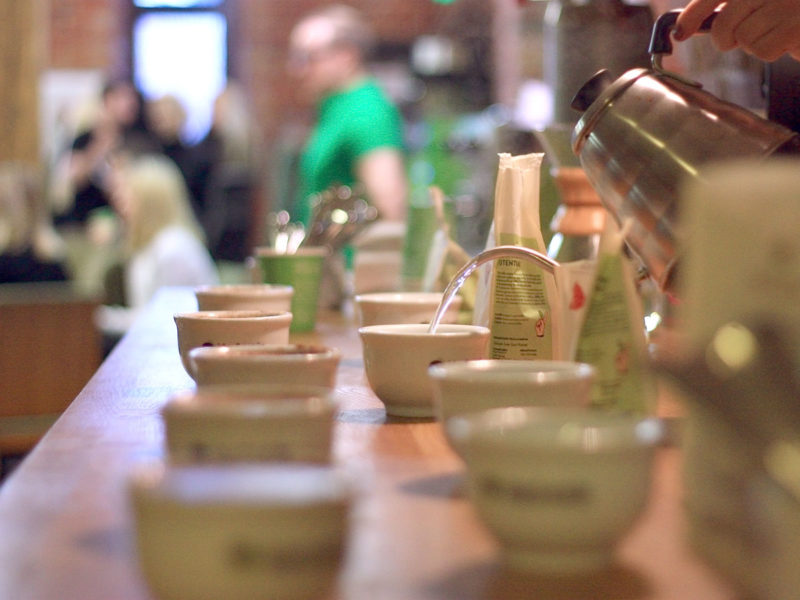
Preparing the Cup Tasting. Almost boiling water is poured over coarsely ground coffee and the blooming phase is started.
2. Cup Tasting
What is Cup Tasting?
Cup Tasting (also called simply “cupping”) is a standardised method of tasting and reviewing coffees around the world. Above all else, the quality and taste (and the qualities that come can be found in the taste) are tested. The best cup tasters often give the same points to the same coffees with a margin of a point or two. In the cup tasting at Johan & Nyström we got to search for tastes in the coffees that ranged from tea-like flavours to nuances of dark chocolate.
In the Johan & Nyström tasting we had coffees almost along the whole so called coffee belt (rougly the area around the equator) all the way from South-America to eastern Asia.
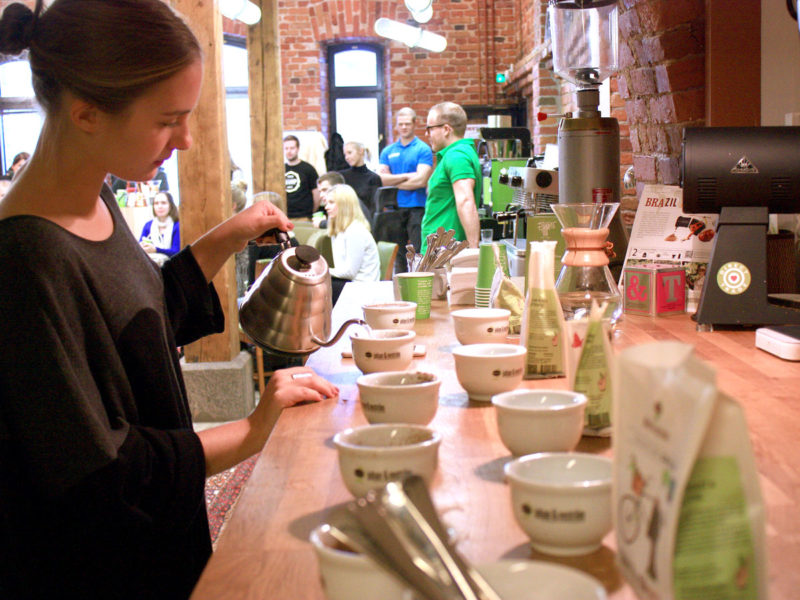
3. Home Brew
At this stop, we got to see how the top barista, Ella from Johan & Nyström, brews coffee. We got to see coffee brewed with the pour over method (also known as drip coffee, basically the Hario V60) as well as an Aeropress.
Here are the professional tips and recipes from brewing coffee:
- Use fresh water from a clean container.
- A high quality coffee ensures the most delicious result.
- The correct ratio between water and coffee and a good recipe (usually about 6 g of coffee to 1 dl of water).
- It’s worth it to acquire the coffee as beans, because the aroma keeps for longer. The coffee should also be kept in the original packaging sealed air-tight.
- Coffee loses its aroma quickly after grinding. This why you should grind the coffee only right before extracting to get a cup full or aroma and taste.
See our favourite recipes for the two brewing methods:
- Aeropress — a convenient, plastic cylinder-shaped device with a plunger.
- Hario V60 — the Pour Over method, also known as drip coffee.
A big thank you again to all the participants and see you at the next Roastery Day event! More information about upcoming events can be found at paahtimopäivät.fi
With joyful coffee greetings,
Slurp team: Antti, Rafael, Tero, Samuli & Manuel as well as Lari and Ella from Johan & Nyström
Learn about the SLURP coffee experienceNewer
#48 Cafetoria Roastery: Honduras Yellow Catuai Espresso
Older
#48 Kaffa Roastery: Guatemala Barberena
Comments (0)
Leave a reply
You must be logged in to post a comment.

